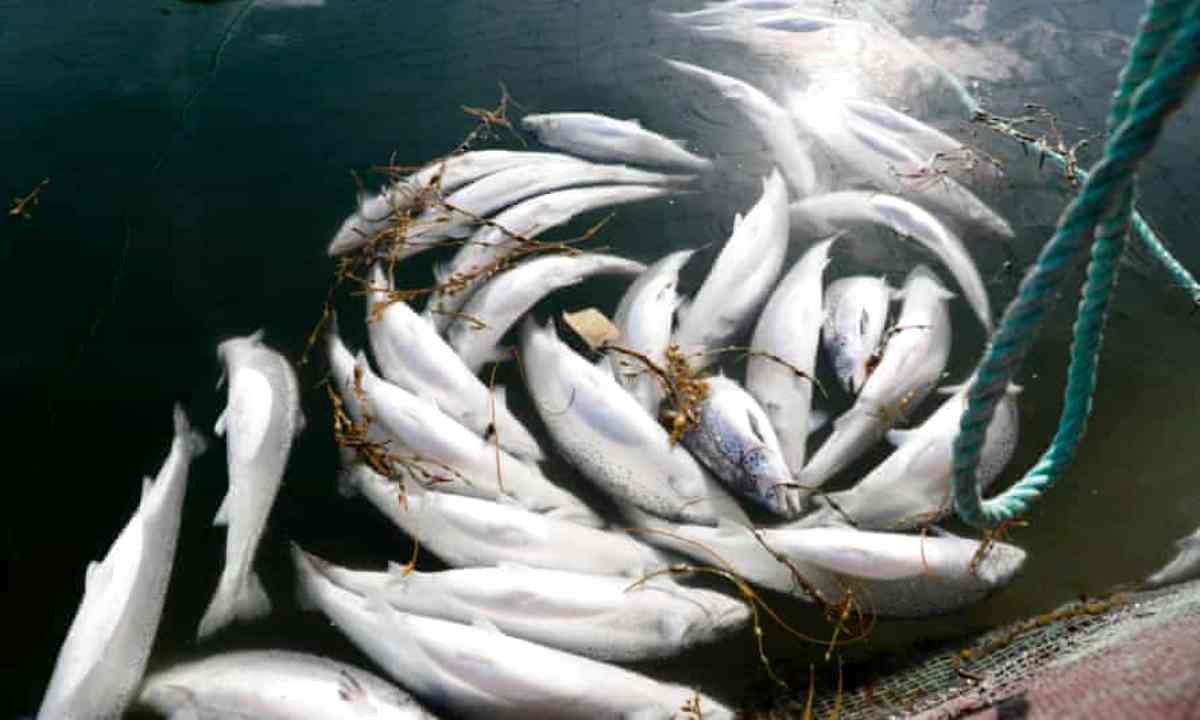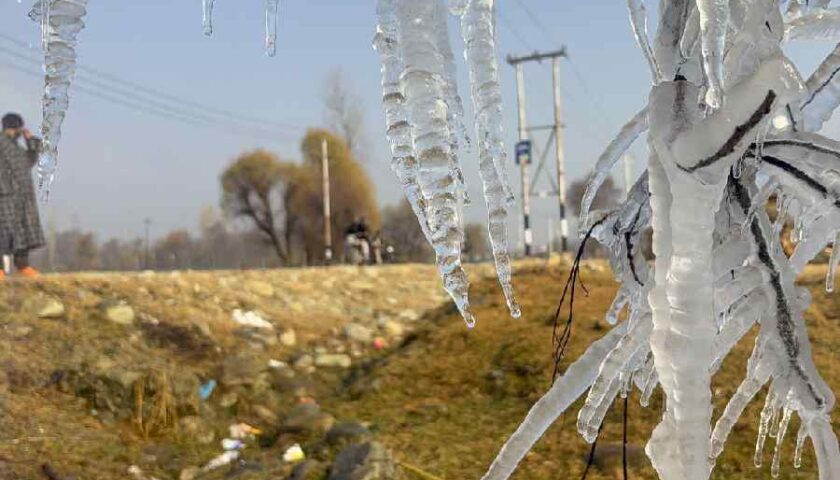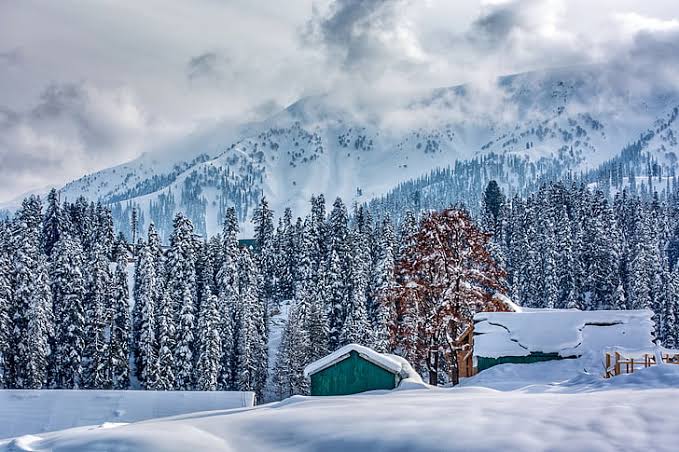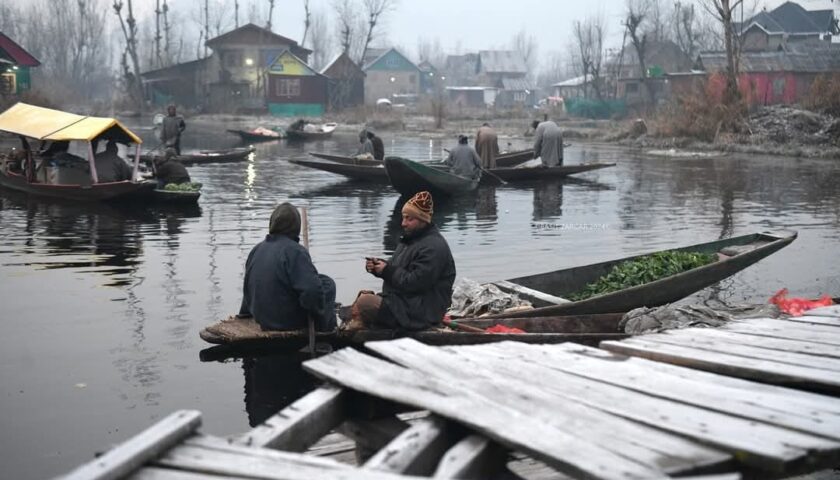Kashmir’s Native Fish at Risk: Heat, Pollution, and Exotic Species Threaten Aquatic Ecosystems
By: Javid Amin | Srinagar | 05 July 2025
Kashmir’s Aquatic Life in Peril: The Silent Crisis Unfolding
Kashmir’s breathtaking lakes and glacial rivers have long been home to a vibrant array of cold-water fish species, many of them endemic to the region. But today, those same waters are sounding an ecological alarm. From Dal Lake to the Jhelum River, Kashmir’s aquatic ecosystems are under siege from rising temperatures, unchecked pollution, and invasive species.
At the heart of this crisis lies the slow disappearance of Schizothorax—known locally as Kashir gaad—an iconic native fish once abundant in Kashmir’s pristine waters. As the valley warms and waters turn toxic, this species is being crowded out by exotic invaders like common carp and rainbow trout.
Native vs. Exotic: A Struggle for Survival
The Decline of Kashir Gaad
Schizothorax, a cold-water fish genus endemic to Kashmir, is deeply tied to both the region’s ecology and its cultural fabric. These fish thrive in oxygen-rich, cold, flowing waters typically found in high-altitude streams, glacial lakes, and spring-fed rivers.
But today, their habitats are rapidly degrading. Rising water temperatures are choking oxygen levels. Toxic pollution from untreated sewage and fertilizer runoff is altering pH and nutrient balances. And habitat fragmentation from dams and siltation is restricting their ability to breed.
The Rise of Common Carp and Trout
Introduced decades ago to boost aquaculture and fishing yields, common carp and rainbow trout are thriving in Kashmir’s increasingly degraded aquatic zones. They are:
- Resilient to poor water quality
- Prolific breeders in warm, stagnant water
- Aggressive foragers, outcompeting native species for food and space
Today, these exotic species dominate the Dal Lake, Wular Lake, Tsoont Koel, and sections of the Jhelum River, drastically altering the native ecological balance.
What’s Driving This Collapse?
Rising Temperatures
Climate change is heating up Kashmir’s freshwater ecosystems. Summers now routinely record water temperatures exceeding 25–30°C, well above what native species like Schizothorax can tolerate.
At these temperatures:
- Dissolved oxygen levels drop, stressing fish respiration
- Metabolic stress increases, weakening immune responses
- Reproductive cycles become irregular or fail entirely
Pollution Overload
Pollution is perhaps the most visible and devastating factor:
- Untreated sewage enters rivers and lakes directly
- Fertilizer runoff from paddy fields raises nitrogen and phosphorus
- Industrial effluents introduce heavy metals and toxins
This causes eutrophication—excessive nutrient growth leading to algal blooms and low-oxygen (hypoxic) or oxygen-free (anoxic) conditions, often resulting in mass fish deaths.
Thermal Stratification
In lakes like Dal and streams like Tsoont Koel, thermal stratification is creating vertical temperature layers. This traps oxygen at the surface, leaving the lower, cooler layers hypoxic. Native bottom-dwelling species like Schizothorax are literally suffocating below.
Invasive Species Pressure
- Carp uproot aquatic vegetation, disturbing nesting zones
- Trout prey on native fish fry and compete for food
- Their unchecked growth is displacing the already fragile populations of endemic species
Ecological and Cultural Fallout
Mass Fish Deaths
In recent years, thousands of dead fish have been found floating in:
- Dal Lake
- Gilsar-Khushalsar lagoon system
- Tsoont Koel and Lidder streams
- Sections of the Jhelum River
Local pollution control boards often blame oxygen depletion or disease, but long-term studies point to cumulative ecological collapse.
Fisherfolk Livelihoods Vanishing
Kashmir’s small-scale fishing community, particularly in Anchar, Ganderbal, and Bandipora, is struggling:
- Daily catch volumes have declined by over 80% in 10 years
- Income has fallen drastically, with many forced to migrate or abandon the trade
Cultural Erosion
- Native fish once held a ritualistic and culinary role in Kashmiri festivals, especially in marriage feasts and Sufi events
- With declining availability, such traditions are fading
- Folk songs and oral stories tied to rivers and native fish are disappearing from communal memory
What Can Be Done? A Multi-Pronged Revival Strategy
Conservation Breeding Programs
- SKUAST-Kashmir has successfully developed seed production techniques for Schizothorax
- Hatchery-based release programs are being piloted in upper Lidder and Sindh streams
Pollution Control and Regulation
- Enforce mandatory sewage treatment before discharge
- Curb pesticide and fertilizer runoff through organic farming incentives
- Penalize industrial polluters with real-time water quality monitoring
Habitat Restoration
- Reforest riparian zones to reduce sedimentation and stabilize temperature
- Ban illegal sand mining that destroys fish spawning grounds
- Re-establish fish corridors blocked by infrastructure projects
Policy Reform for Aquatic Resilience
- Phase out exotic fish stocking in public water bodies
- Develop a Kashmir Aquatic Biodiversity Action Plan
- Promote community-managed fisheries with participatory monitoring
Voices from the Water
Firdous Dar, fisherman from Anchar Lake:
“We used to catch 5-6 kg daily. Now, even 1 kg is rare. We can’t live like this.”
Dr. Farooq Ahmad, limnologist at Kashmir University:
“Our aquatic systems are breaking down. We need urgent intervention or we risk total collapse.”
Mehmooda Bano, elder from Ganderbal:
“Kashir gaad was part of our wedding traditions. Now we use market fish from Punjab. It doesn’t feel the same.”
Final Thoughts: Time to Act Before the Waters Go Still
The story of Kashmir’s aquatic life is not just about fish—it’s about the symbiosis between nature, people, and culture. Losing native species like Schizothorax would mean losing a part of Kashmir’s soul.
As the region battles climate change and unchecked development, protecting its waters must become a priority, not an afterthought.
Let this be the generation that saved Kashmir’s rivers, lakes, and the life within them.




